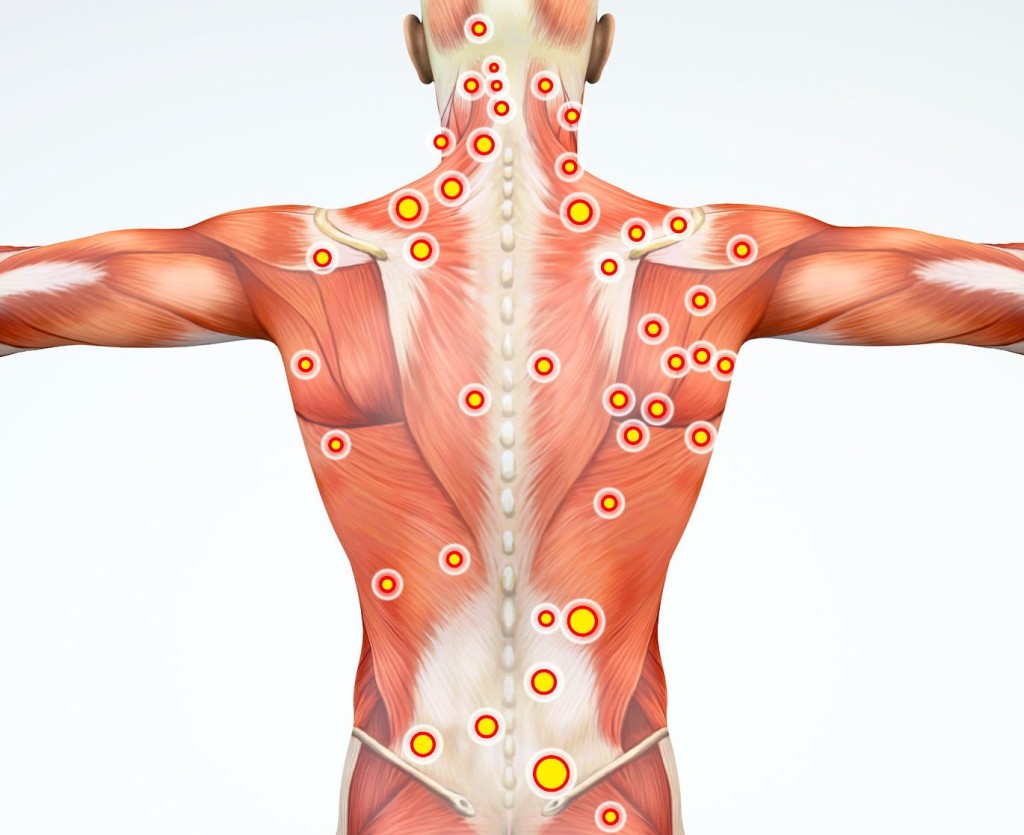
The term ‘slipped disc’ is common when describing back pain, but it’s actually a bit of a misnomer. The discs in the spinal column can’t really slip out of place, but they can certainly suffer some damage (however, recent studies show that they can also be completely symptom free). Furthermore, one of the main factors of chronic low back pain is the lack of exercise and a poor life style which may affect the way a person is moving, posture and sleep patterns.
BASIC SPINE ANATOMY
The spinal column is made up of 26 small bones called vertebrae. These bones link together to form a chain-like structure that allows flexibility in the torso but still protects the nerves connecting other parts of the body to the brain. In between the vertebrae is a small disc that cushions the spine by absorbing the shock from daily activities like walking and lifting.
These discs are made up of two parts. The outside is made of a tough, hard shell, while the inside (the nucleus pulposus) is soft and gel-like. Sometimes, the nucleus pulposus can protrude, or herniate, through the harder outer part of the disc, causing the disc to bulge and appear as if it has moved out of alignment with the spine. For this reason, the condition is colloquially referred to as a ‘slipped disc’ even though the disc itself has not really moved at all.
There are three kinds of disc herniation:
• Prolapse: Where the disc bulges out between vertebrae although its hard outer layer is still intact.
• Extrusion: Occurs where there is a tear in the hard outer layer of the disc which allows the nucleus pulposus to leak out. In these cases, the extruded tissue is still connected to the disc structure.
• Sequestration: The most extreme kind of herniation. This occurs when the nucleus pulposus completely escapes the disc structure and enters the spinal column.
CAUSES OF DISC HERNIATION
For most patients, disc herniation occurs as a normal part of the ageing process – the spine works very hard and sustains a good deal of wear and tear. As we get older, spinal discs lose some of their elasticity which leaves the more prone to cracking. Occasionally, injury to the spine or traumatic events (such as falling, repetitive activities or heavy lifting) can lead to herniation too.
SYMPTOMS OF HERNIATED DISCS
Herniated discs can cause compression on the nerves that run through the spinal column and this can be extremely painful. One of the most common symptoms of disc herniation in the lower part of the spine is sciatica.
Other symptoms can include pain, numbness, tingling and burning sensations. These symptoms can appear on one or both sides of the body, extending down the arms and the legs. Pain caused by herniated discs is often worse at night, or after extended periods of sitting or standing.
One of the most common things about herniated discs (suggested by recent studies) is that they can also be completely symptom free. Why? Pains is different from damage.
Note: If you are experiencing loss of bladder or bowel control in addition to back pain, this may indicate a more serious and rare problem called Cauda Equina syndrome. This condition is caused by the lower spinal nerve roots being compressed and requires urgent medical attention.
PHYSIOTHERAPY AND HERNIATED DISCS
As physiotherapists, we often hear patients talking about a ‘slipped disc’. Your discs are really strong tissues that sit between the bones of your spine. Because they are so strong, they simply cannot slip out of place, and neither can any other joints in your spine.
Most people who suffer from back pain do not need to have an MRI scan as part of their assessment. The majority of back pain complaints are caused by simple strains and sprains and a scan will not change the way patients are treated.
Physiotherapy can be very effective in relieving the pain and other symptoms associated with herniated discs. Techniques such as neural gliding, joint mobilisation and dry needling are all known to be effective in treating this condition. However, life style changes and improve exercising is the main answer suggested by recent studies.
Your physiotherapist will also show you movements and positions to help relieve the pain and symptoms of disc herniation, as well as giving you exercises to prevent further pain.












